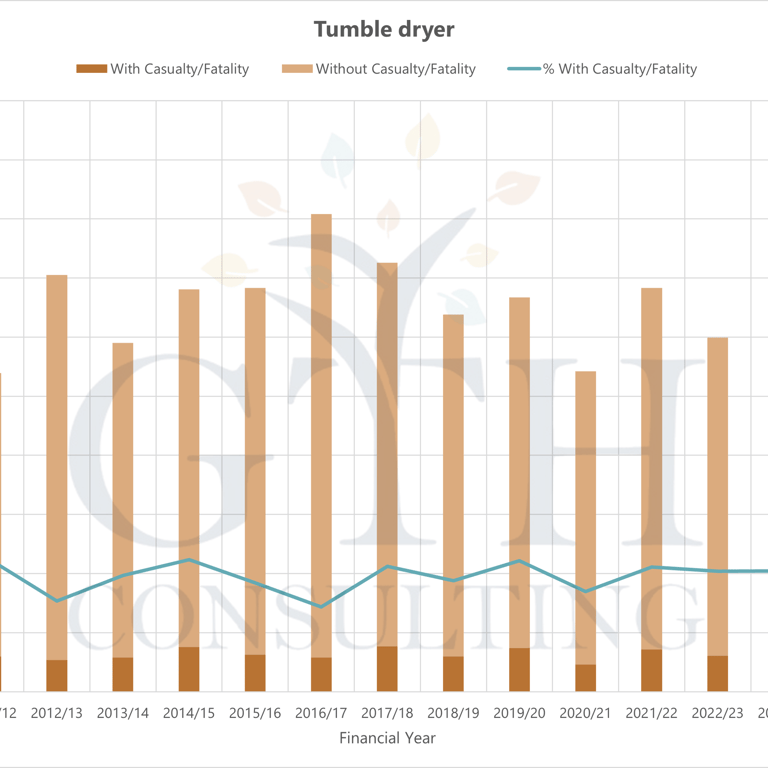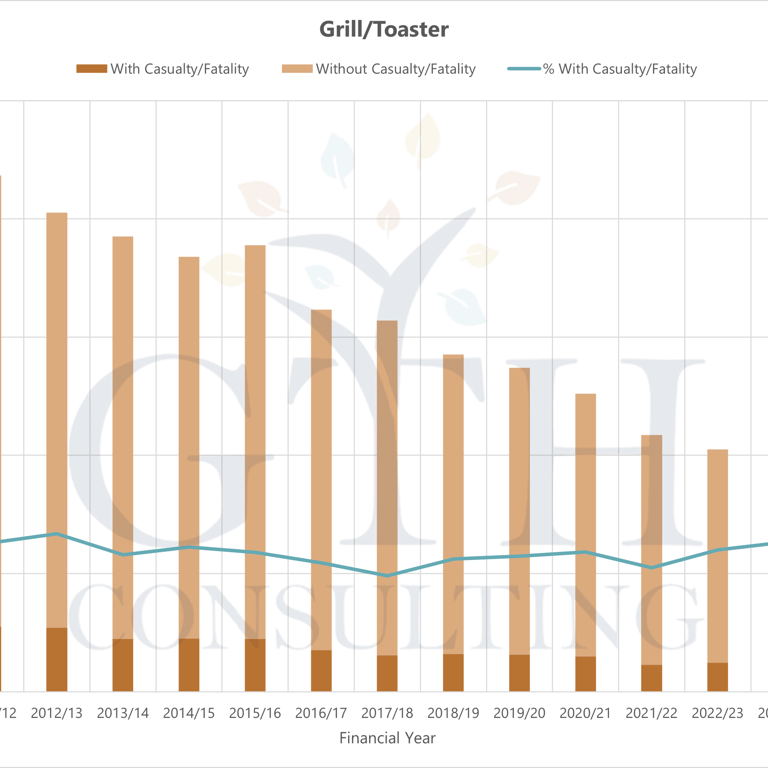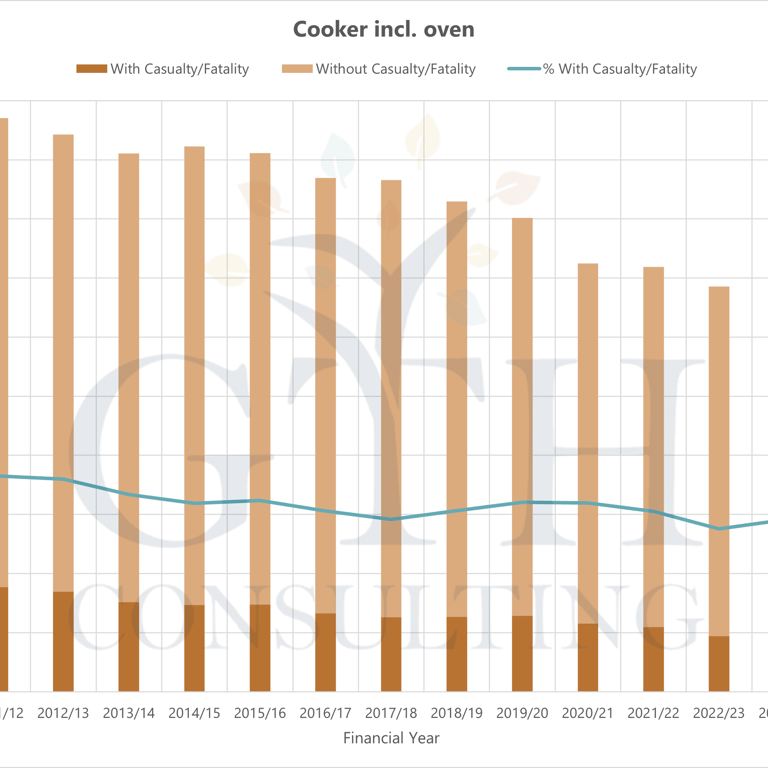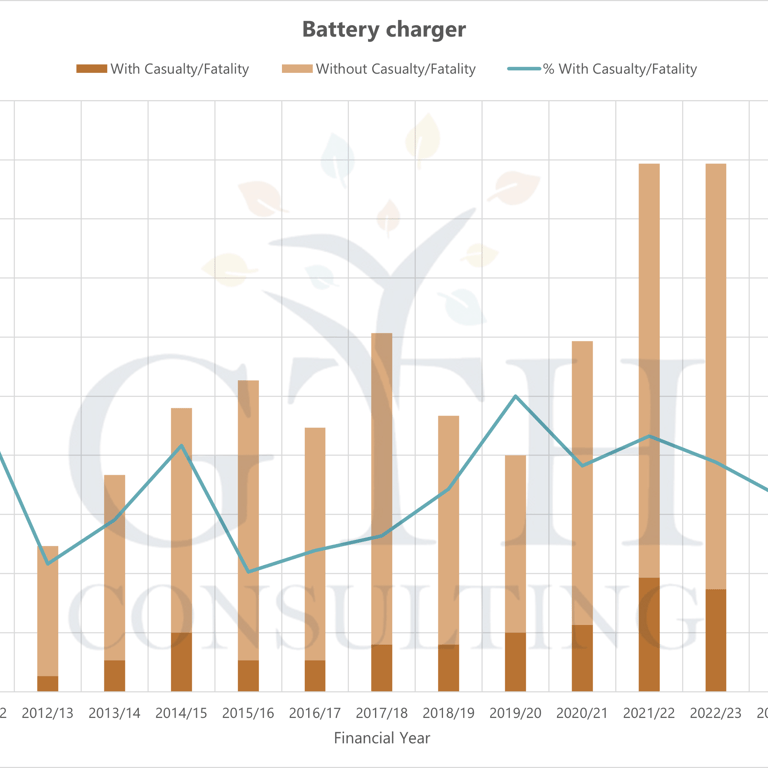From Cookers to Chargers: Evolving Risks in Dwelling Fires
An evidence-led look at how household ignition sources have changed over the past 15 years, and what that reveals about where fire safety must adapt.
10/15/20253 min read


We talk a lot about how many dwelling fires there are, however, I wanted to look at how they start and whether that has changed. Using 15 years of national data, one finding stands out: we have fewer fires than a decade ago, yet the chance of someone being hurt when a fire occurs is much the same (around 15%).
Behind that stability, the mix is changing: battery-related fires are rising, grills and toasters are falling, tumble dryers remain steady, and cookers still dominate as the leading source of ignition.
About the data
The analysis draws on the Fire Statistics Incident Level Dataset (https://www.gov.uk/government/statistics/fire-statistics-incident-level-datasets), published annually by MHCLG and now covering incidents up to March 2025. It includes detailed records from every Fire and Rescue Service in England, and includes over 450,000 dwelling fires in total. It’s a powerful resource, but not without some caveats:
Recording practices vary slightly between services and over time, and this is likely to effect the “source of ignition” and “cause” fields.
Low-volume categories fluctuate, sometimes reflecting reporting noise rather than genuine change.
A sizeable minority of incidents still fall into “other/unspecified”, particularly where investigation outcomes are unclear.
Even so, it provides the best available national picture of how dwelling fire risk has evolved and which causes remain most persistent.
Overall picture
Over the 15-year period, dwelling fires in England have steadily declined from around 36,000 in 2010/11 to just over 25,000 in 2024/25. That’s a reduction of roughly 30%, continuing the long-term downward trend.
However, the proportion of incidents involving a fatality or casualty has remained remarkably stable at around 15%. In other words: while we are seeing fewer fires, when they occur, they are just as likely to harm someone as they were a decade ago.
This highlights a persistent challenge for prevention and protection teams: reductions in incident frequency don’t necessarily translate into proportional reductions in harm.
Different sources, different risks
Looking at ignition sources offers useful insight into how those risks vary…
A few messages stand out:
Cooking remains the dominant risk, accounting for more than a quarter of all incidents. When other cooking equipment fields are included, these make up nearly half of all recorded dwelling fires.
Wiring, cabling and plugs are responsible for around 8% of all dwelling fires, but with a lower-than-average casualty rate (7%). A reminder that electrical faults remain common, even if outcomes tend to be less severe.
Battery chargers show a clear upward trend in both number and proportion involving casualties, which is likely linked to growth in portable electronics and lithium battery use.
Grills and toasters show the opposite: a sustained decline in incidents, possibly reflecting improved product safety and consumer awareness.
Tumble dryers remain stubbornly constant, despite high-profile campaigns and product recalls.
Smoking materials and candles continue to have disproportionately high casualty rates, which may reflect circumstances where fires occur at night or in occupied rooms.
Interpreting the trends
The data suggests that while traditional causes, especially cooking, still dominate, the composition of risk is subtly changing.
Certain electrical items now account for a larger share of incident sources, and while many are low-severity, they are more complex to manage through prevention work. At the same time, behavioural causes such as smoking and candles seem to remain resistant to long-term reduction.
For Fire and Rescue Services, that raises important questions:
How well are local prevention strategies aligned to these evolving ignition patterns?
Are safety campaigns and inspection programmes targeting the sources that now present the greatest harm potential?
Could emerging battery-related risks warrant greater focus in risk-based inspection or community engagement work?
Looking ahead
The national dataset is a powerful starting point, but the real value comes from exploring it locally, whether that’s by property type, deprivation measures, demographic profiles, or time of day. Those patterns can provide strong evidence for prioritising prevention, shaping campaign design, and informing CRMP delivery.
At GTH Consulting, I can help Fire and Rescue Services interrogate this data in more depth, whether to understand local trends, identify priority risk cohorts, or translate national insight into actionable local plans.
Closing thought
The long-term decline in dwelling fires is a success story. But it shouldn’t obscure the fact that the character of risk continues to evolve, reflecting how we cook, heat, charge, and live. Insights drawn from this data can help ensure that our prevention and protection activities evolve just as quickly.
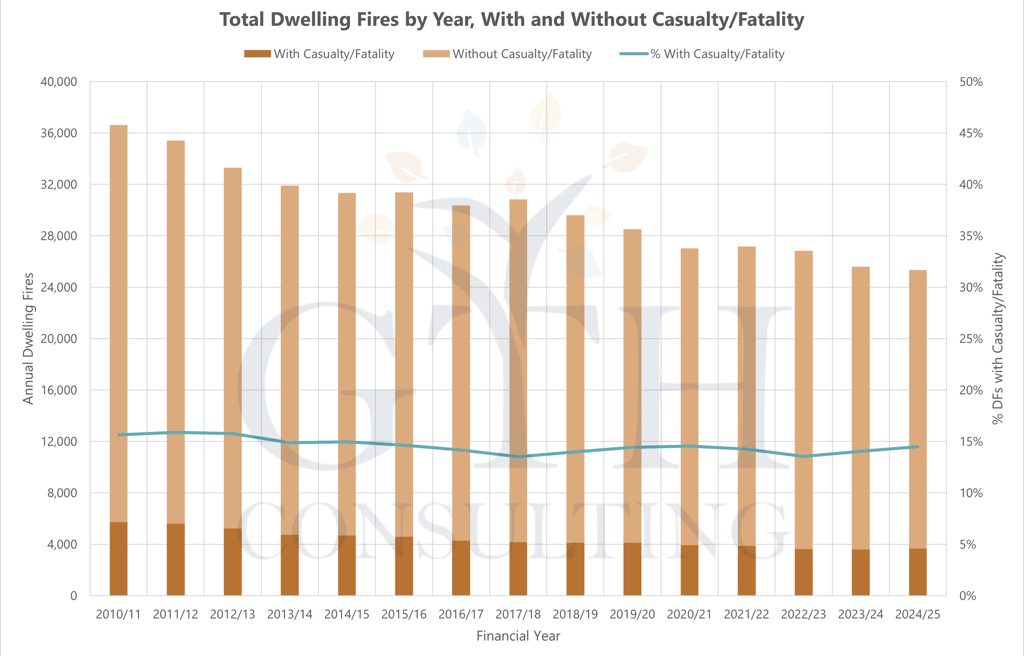

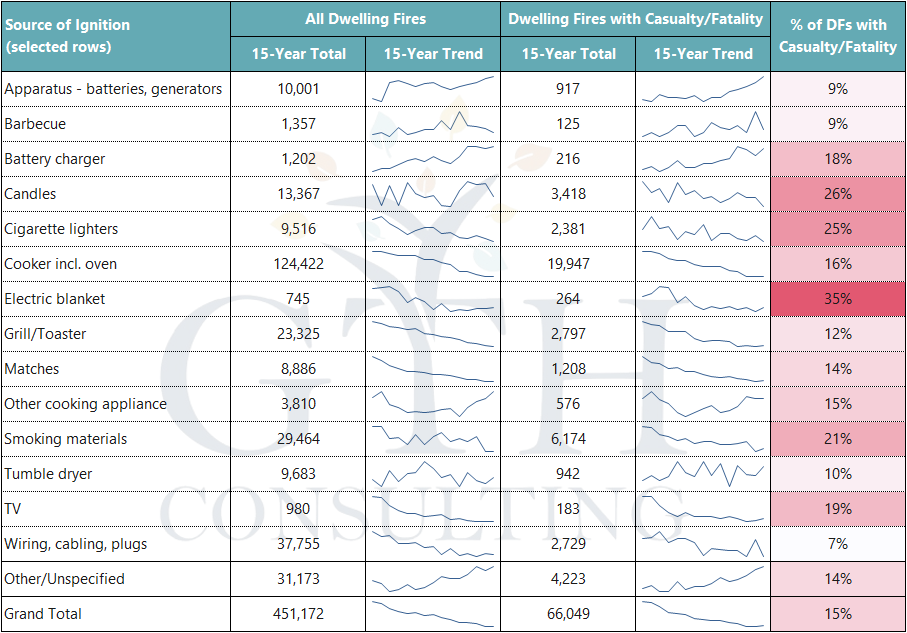

Selected Incident Types: Dwelling Fires by Financial Year, With and Without Fatality/Casualty
